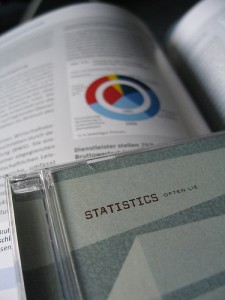 Many journalists face difficulties in dealing with statistics, and frequently lack the competence to present quantitative information to their publics in easy-to-grasp language.
Many journalists face difficulties in dealing with statistics, and frequently lack the competence to present quantitative information to their publics in easy-to-grasp language.
This is nothing new, as most journalism textbooks contain tips on how to deal adequately with numbers and percentages. Thus far, these remain rules of thumb. Three U.S. researchers – Coy Callison, Rhonda Gibson and Dolf Zillmann – recently tested these rules. Drawing from 240 students who participated in an experiment, their empirical analysis provides new, surprising insights.
The test subjects could deal as easily with percentages as with absolute numbers. Contrary to textbooks, they experienced more difficulties when percentages were characterized verbally. For example, “30 percent of the citizens of XY have AIDS” has a meaning different from “3000 of the citizens of XY have AIDS” – but the percentage is no more difficult to grasp and remember. If, instead, the percentage is transformed into the phrase “Three of ten of the citizens of XY have AIDS,” an additional barrier of comprehension is created. The researchers mention, however, that their experiments should be expanded, and that less educated groups still need to be included.
Coy Callison et al.: How to Report Quantitative Information in News Stories, Newspaper Research Journal, Vol 30/Nr. 2, Spring 2009, 43-55.
Image courtesy of Flickr – mac steve
Tags: Journalism research, Statistics













































